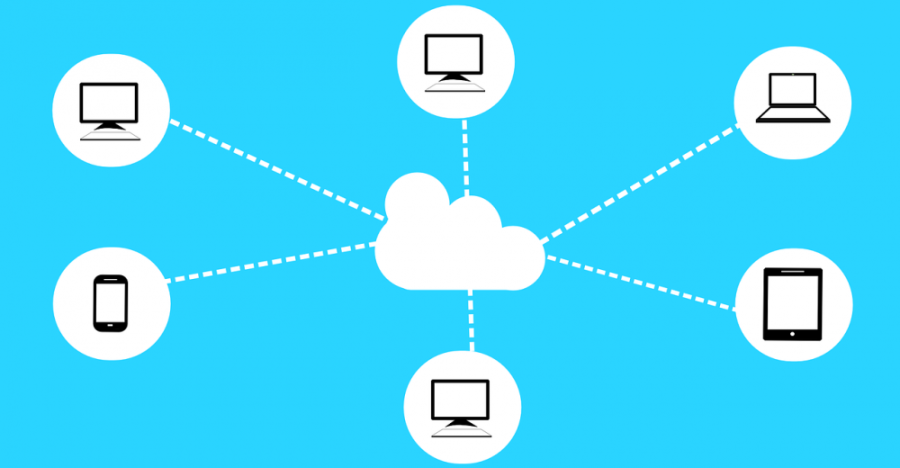The cloud, or as I like to call it, “someone else’s computer,” has become thoroughly integrated into our daily lives. We can automatically back up our pictures to iCloud, turn in our homework using Dropbox and email our peers gigantic files using Google Drive. Cloud services have become so easy to use they seem to have created a mystique surrounding what is actually happening to our data when they’re uploaded to “the cloud.” Are they just floating around in the ether of the internet? Do little elves climb into our phones at night and scurry off with everything we want to save? As with most things, the reality is a lot less magical, though not any less ingenious.
The seemingly overnight boom in cloud services has revolutionized the way we store and share our data. Thanks to Google Docs, the days of having to pass around a thumbdrive to collaborate on a paper are long behind us. While the term “the cloud” has become a catch-all for these types of services, they can be broken down into two groups, cloud storage and cloud computing.
When you think of the cloud, what you’re probably picturing is cloud storage. These are the services like iCloud and Dropbox, which store your files for you and allow you to access them from any device. The way this is achieved is quite straight-forward.
RELATED: Browse the internet without leaving footprints
When you add a file to Dropbox, it is automatically uploaded over the internet to one of Dropbox’s servers, which are essentially high-powered computers with a huge amount of storage (think the hard drive on your computer, but much faster and way more expensive). You are allocated a certain amount of space on these servers (2 Gigabytes for a free Dropbox account, 5 Gigabytes for a free iCloud account) and your uploaded files are stored in this designated space.
On Dropbox, your files are first split into “blocks,” which are essentially virtual, individual hard-disks. Once split into blocks your data are encrypted, helping protect them from those trying to gain unauthorized access to your files. Finally, these encrypted blocks are backed-up to multiple Dropbox servers in various geographical locations. That way, if one of their storage facilities (also called server farms) burns to the ground, your data is still safely stored in one of their many other facilities. Some folks like to call this “quality assurance.”
While cloud computing is vastly different, it still works on the same principle, using someone else’s computer instead of your own. Apple’s voice assistant, Siri, is an example of cloud computing.
An iPhone simply doesn’t have enough processing power to analyze something as complex and nuanced as human speech. So when you ask Siri something, your voice is sent to one or more remote servers for processing and language decryption. Some of these servers don’t even belong to Apple, but rather to third-party contractors. When you ask Siri a complex mathematical equation, your voice is sent to Apple’s servers to convert the input into text. That server then forwards the translated text to Wolfram Alpha, a popular web-based mathematics computational engine for final analysis.
RELATED: Campus Guide ’17: Net Neutrality should be appreciated, defended
Some popular cloud services even operate as both a cloud storage and cloud computing system. Take Google Docs for example. When you collaborate on editing a document, you are more or less connecting to a cloud computing service that runs an application allowing for multiple people to access the same document to edit it in real time. You can insert notes, message everyone viewing the document and even see exactly where another collaborators cursor is located.
But when it’s all said and done, the document itself is actually being saved on Google’s cloud storage platform, Google Drive. By integrating cloud computing with cloud storage, Google was able to make a service that has completely revolutionized the way we work together while creating the new industry standard for document collaboration.
The next big idea in cloud services is hard to predict. As with most tech products, the ones that gain traction are the ones that we never could have dreamed of. But there is one (almost) sure thing we can expect from the next great cloud service: it will make our lives a hell of a lot easier.
Follow Brian Winkler on Twitter









